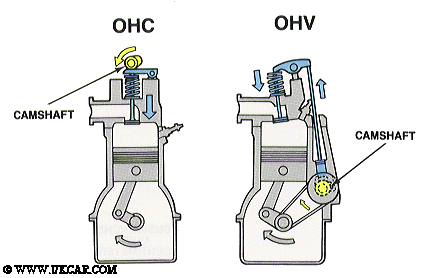
Engine Parts 101: Valve Train Components
By: Hope Smith
Engine parts can be extremely confusing if you don’t understand the basic purpose and functionality of each component. When you are first discovering the ins and outs of an engine, there might be a few unfamiliar parts that you have pulled out. This blog will help you identify your engine parts, specifically your valve train components
Understanding the purpose of engine parts plays a key role in diagnosing engine issues. This ensures that when you are experiencing engine failure, you can identify which part of the engine is not performing correctly. So, let’s talk about the valve train component purpose and functionality.
Valve Train Component Purpose
Overhead valve (OHV) engines have valve train components that consist of valve springs, rocker arms, pushrods, and lifters. Overhead camshaft (OHC) engines have valve train components that consist of valve springs, rocker arms, and lifters. The difference between these two engines is the location of the camshaft. Is it on top of the head and lacking pushrod or is it below the head and includes pushrods? The purpose of the valve train components are to open and close the valves. The valves need to open and close in order to intake fuel through the intake valve and release exhaust through the exhaust valve.

OHC and OHV comparison diagram provided by UKCAR
Valve Train Component Functionality - OHV
In an OHV engine, the valve train process starts when the camshaft begins to rotate. At the highest point on the lobe of the camshaft, the lifter is lifted upward, which causes the pushrod to move upward as well. As the lifter raises the pushrod, the pushrod applies pressure to the underside of the rocker arm. The rocker arm is balanced between the pushrod and the valve spring. When the pushrod applies pressure to the underside of the rocker arm, the rocker arm pivots downward and compresses the valve spring. The compression of the valve spring opens up the exhaust valve and releases the exhaust. When the highest point of the camshaft lobe moves back to it’s original position, then the valve spring relaxes. This causes the valve to close and returns all the other valve train components back to their original position, too. The OHV engine, as well as the OHC engine, is synchronized with the rest of the engine cycle by the timing set.

OHV functionality diagram provided by "Chapter 11 Lesson 3 Engine Top End." by Yohanes Hartanto
Valve Train Component Functionality - OHC
The OHC engine starts in a similar manner as the OHV engine. The camshaft begins to turn and the process starts. Since the camshaft is located at the top of the head, instead of being below in the block, there is no need for pushrods. The camshaft has direct contact with the lifters. The highest point of the camshaft lobe connects with the lifters and begins raising the lifters, applying pressure to the underside of the rock arms, and compressing the valve springs. The process is ready to begin again once the camshaft returns to its original starting point.

OHV functionality diagram provided by Skill-Lync
There can be variations of the valve train components depending on engine type that have not been discussed. This is a general overview of valve train components within popular engines. Now that the purpose and functionality of valve train components have been covered it will be easier to identify and solve engine issues.